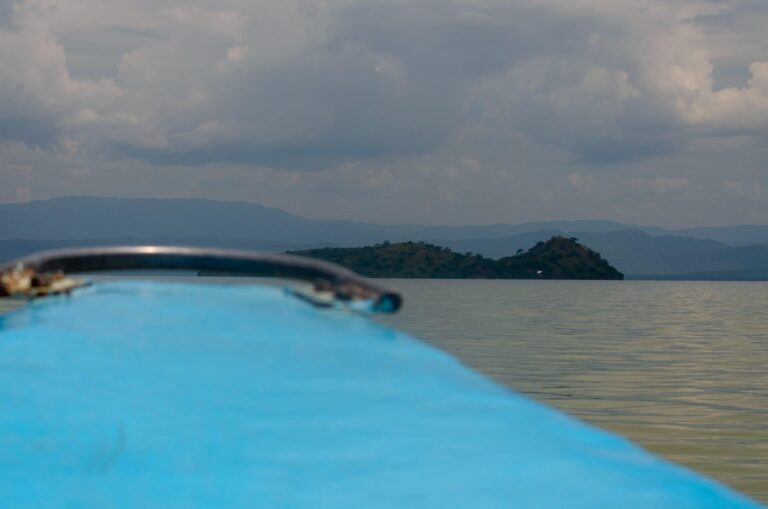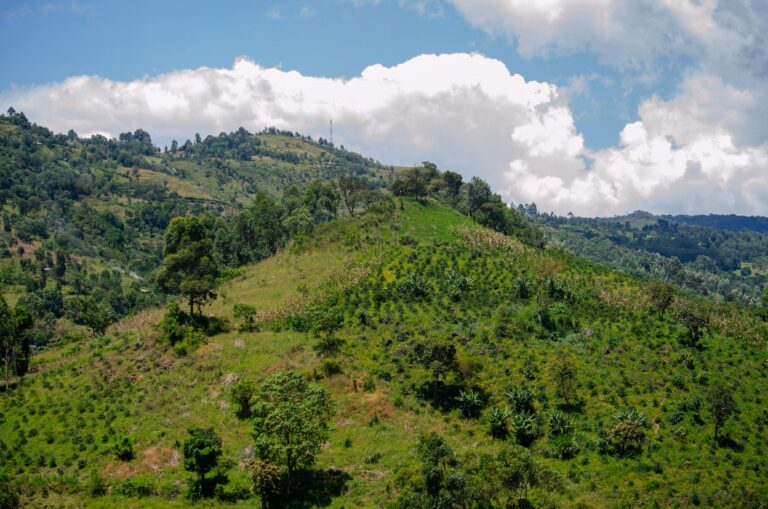Kenya, a country renowned for its breathtaking landscapes and rich biodiversity, offers some of the most spectacular hiking and trekking experiences in Africa. From towering mountains to serene hills and rugged craters, the diversity of terrains ensures an adventure for every outdoor enthusiast. Here’s an in-depth look at Kenya’s hiking and trekking gems, providing everything you need to know for an unforgettable experience.
Table of Contents
Iconic Hiking and Trekking Destinations in Kenya
Mount Kenya
- Overview:
As Africa’s second-highest peak, Mount Kenya is a UNESCO World Heritage Site and one of the top hiking destinations. It features three main peaks: Batian, Nelion, and Point Lenana. - Popular Routes:
- Naro Moru Trail: The fastest but steepest route.
- Sirimon Trail: Offers gradual ascents and scenic beauty.
- Chogoria Trail: Known for its lush forests, waterfalls, and spectacular views.
- Experience:
Trek through unique Afro-alpine vegetation, glacial lakes, and rocky terrains to reach Point Lenana, a manageable summit for non-technical climbers.
Aberdare Ranges
- Highlights:
This mountain range is home to dense forests, hidden waterfalls, and unique wildlife, such as elephants and leopards. - Popular Trails:
The Karuru Falls hike and Kinangop peak are favorite options for adventurous trekkers. - Special Feature:
Hiking here often feels like stepping into a fairy tale, thanks to its mystical forests and cascading streams.
Hell’s Gate National Park
- Unique Feature:
Famed for its dramatic cliffs, geothermal activity, and wide-open spaces, Hell’s Gate is one of the few parks where you can hike or cycle alongside wildlife. - Scenic Attractions:
Explore the deep gorges, Fischer’s Tower, and geothermal steam vents. The terrain is relatively flat, making it accessible for all fitness levels.
Ngong Hills
- Proximity:
Located just an hour from Nairobi, the Ngong Hills are a favorite for city dwellers seeking a quick escape. - Trekking Experience:
The hills form a ridge with rolling peaks, offering stunning views of the Great Rift Valley on one side and Nairobi on the other. The hike is moderately challenging, making it ideal for both beginners and experienced hikers.
Loita Hills
- Remote Wilderness:
Known as the “Forest of the Lost Child,” Loita Hills provides a secluded and peaceful trekking experience. - Cultural Experience:
Treks here often include interactions with the Maasai community, offering insights into their traditions and lifestyle. - Ideal For:
Nature lovers seeking untouched landscapes and cultural immersion.
Chyulu Hills
- Volcanic Beauty:
These rolling green hills were formed by volcanic activity and are home to caves and unique wildlife. - Activities:
Perfect for both short hikes and multi-day treks. - Scenery:
Expect breathtaking views of Mount Kilimanjaro and the surrounding savannah.
Menengai Crater
- Dramatic Landscapes:
One of the largest calderas in the world, Menengai Crater offers striking views and challenging trails. - Hiking Experience:
The rim trails provide panoramic views of the crater and surrounding areas, including Lake Nakuru.
🏞️ Ready to Conquer New Heights? 🏔️
🚀 Join Joe Photography and Safaris for thrilling hiking adventures across Kenya! Meet new friends, explore breathtaking trails, and create unforgettable memories. 🌿✨
🎒 Join Our Hiking WhatsApp Group 🚀Hikes. Adventures. Friendships. Memories. 🌍
What to Expect During a Trek in Kenya
Diverse Ecosystems
Kenya’s hiking trails traverse a variety of ecosystems, from alpine zones and volcanic terrains to dense forests and open savannahs. Each destination offers its own unique flora and fauna.
Wildlife Encounters
It’s common to encounter wildlife on trails, such as zebras, giraffes, and elephants. In certain areas, guided hikes are essential to ensure safety.
Cultural Immersion
Many trekking routes, such as those in Loita Hills or around Mount Suswa, pass through villages where you can engage with local communities. This adds a rich cultural layer to the adventure.
Challenging Climbs
While some trails like Ngong Hills are suitable for beginners, others like Mount Kenya require a higher level of fitness and preparation.
Tips for an Unforgettable Trekking Experience in Kenya
- Prepare Adequately:
Invest in sturdy hiking boots, breathable clothing, a hat, sunscreen, and plenty of water. - Hire Local Guides:
Guides are essential for navigating trails, especially in wildlife-rich areas or remote regions. - Obtain Permits:
Many parks require entry permits, which can often be arranged at the entrance or through a tour operator. - Timing is Key:
The dry seasons (January to February and June to October) are ideal for trekking, as trails are less muddy, and the weather is more predictable.
Popular Multi-Day Treks in Kenya
Mount Kenya Summit Trek
- Duration: 4–6 days, depending on the route.
- Highlights: Glaciers, high-altitude vegetation, and the sense of accomplishment upon reaching Point Lenana.
Loita Hills to Lake Magadi
- Duration: 3–5 days.
- Highlights: Remote wilderness, Maasai cultural interactions, and breathtaking sunsets over the Great Rift Valley.
Chyulu Hills Adventure
- Duration: 2–4 days.
- Highlights: Rolling landscapes, birdwatching, and views of Mount Kilimanjaro.
Unique Aspects of Trekking in Kenya
Cultural Trekking
Kenya’s hiking trails often intersect with communities such as the Maasai and Samburu, offering trekkers an opportunity to learn about traditional practices, music, and dance.
Conservation Focus
Many trekking destinations in Kenya are within national parks or conservancies, meaning your visit contributes to wildlife conservation efforts.
Photographic Opportunities
From wildlife encounters to stunning landscapes, Kenya’s trekking trails are a photographer’s paradise.
Why Kenya is a Top Choice for Hiking Enthusiasts
Accessibility
Many trekking spots are within a few hours’ drive from major cities like Nairobi, Mombasa, and Nakuru.
Variety of Trails
Kenya offers everything from gentle nature walks to challenging mountain climbs.
Rich Biodiversity
The country’s unique mix of wildlife and ecosystems ensures a dynamic and rewarding trekking experience.
Year-Round Opportunities
While the dry season is ideal, certain destinations like Ngong Hills and Aberdare Ranges can be explored year-round.
FAQs on Hiking and Trekking in Kenya
What are the best hiking and trekking destinations in Kenya?
Kenya offers a variety of hiking and trekking spots, including Mount Kenya, Hell’s Gate National Park, Ngong Hills, Aberdare Ranges, and the Chyulu Hills. Each destination offers unique landscapes and experiences for different skill levels.
What should I pack for a hiking or trekking trip in Kenya?
Essential items include sturdy hiking boots, comfortable clothing, a backpack, a water bottle, sunscreen, a hat, snacks, a first aid kit, and a camera to capture the stunning scenery. For multi-day treks, consider additional gear like sleeping bags and warm layers.
Do I need a guide for hiking in Kenya?
While some trails are easy to navigate independently, hiring a guide is highly recommended for safety, especially in remote or challenging terrains like Mount Kenya. Guides also provide valuable insights into the local flora, fauna, and culture.
What is the best time of year for hiking and trekking in Kenya?
The ideal time is during the dry seasons, from January to March and June to October. These months offer clear skies and favorable conditions, making the trails safer and the views more spectacular.
Are there hiking options suitable for beginners in Kenya?
Yes, there are several beginner-friendly trails, such as Karura Forest, Ngong Hills, and Oloolua Nature Trail. These trails offer shorter distances and moderate terrains, perfect for those new to hiking.
Also Read:


